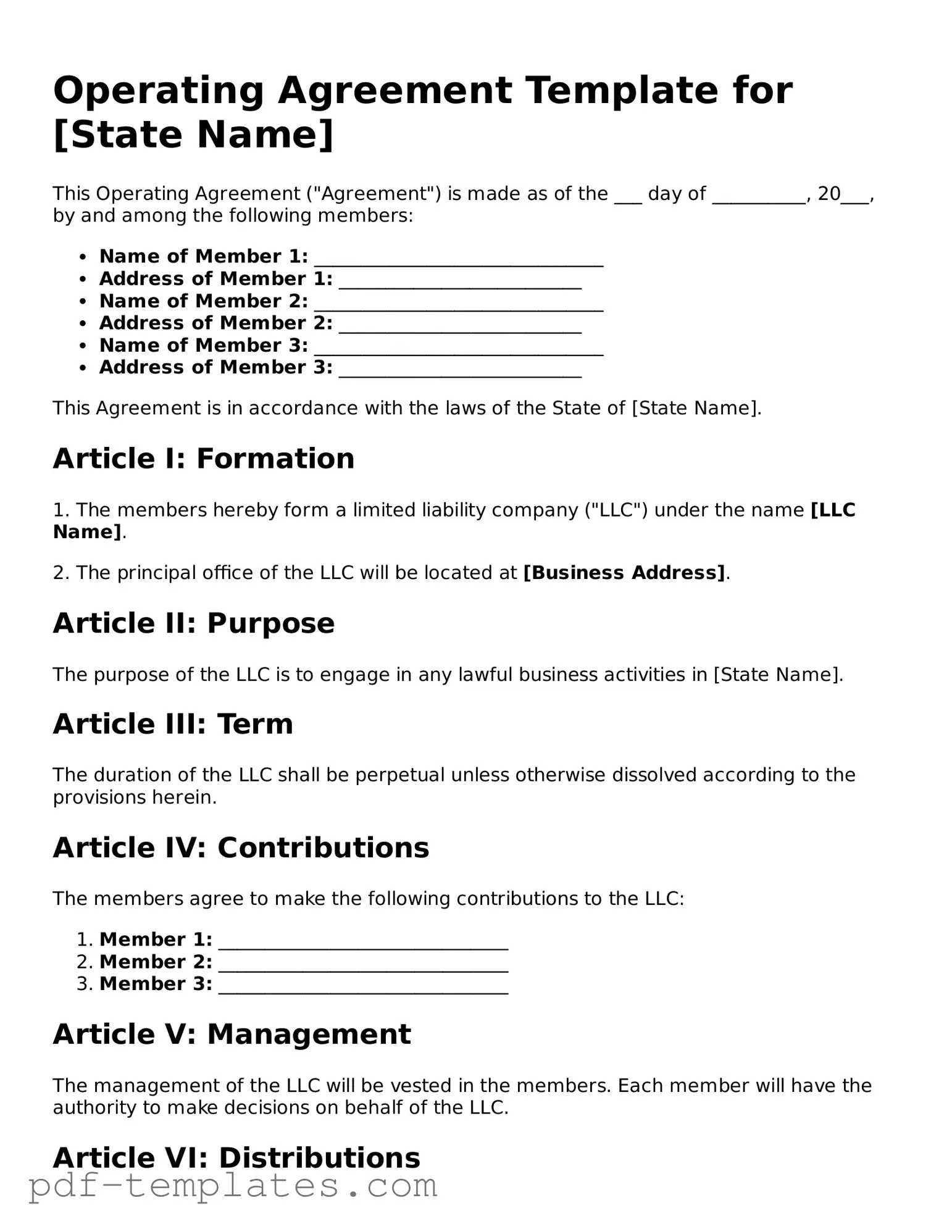An Operating Agreement is similar to a Partnership Agreement. Both documents outline the roles, responsibilities, and profit-sharing arrangements among business partners. In a Partnership Agreement, partners agree on how to manage the business and what happens if a partner wants to leave or if the partnership dissolves. This agreement serves to prevent disputes by clearly defining expectations and obligations.
Another similar document is the Bylaws of a corporation. Bylaws govern the internal management of a corporation, detailing how meetings are conducted, how directors are elected, and how decisions are made. Like an Operating Agreement, Bylaws establish rules that help ensure smooth operations and clarify the relationship among stakeholders.
A Shareholders' Agreement is also akin to an Operating Agreement. This document outlines the rights and obligations of shareholders in a corporation. It addresses issues such as share transfers, voting rights, and dispute resolution. Both agreements are designed to protect the interests of the parties involved and to provide a clear framework for governance.
The Limited Liability Company (LLC) Membership Agreement shares similarities with an Operating Agreement. This document details the rights and responsibilities of LLC members. It covers topics such as capital contributions, profit distribution, and management structure. Both documents serve to define the relationship among members and provide a roadmap for the company's operations.
A Joint Venture Agreement is another document that resembles an Operating Agreement. It outlines the terms of collaboration between two or more parties working together on a specific project. Similar to an Operating Agreement, it specifies each party's contributions, responsibilities, and how profits and losses will be shared. This clarity helps prevent misunderstandings and promotes successful partnerships.
The Franchise Agreement is also comparable to an Operating Agreement. This document outlines the relationship between a franchisor and a franchisee. It details the rights and obligations of both parties, including fees, operational procedures, and branding guidelines. Like an Operating Agreement, it aims to ensure that all parties understand their roles and responsibilities within the business framework.
A Non-Disclosure Agreement (NDA) can be similar in terms of protecting sensitive information. While not directly related to operational procedures, it establishes confidentiality between parties. This agreement ensures that proprietary information shared during business dealings remains confidential, similar to how an Operating Agreement protects the business's internal processes and member information.
The Employment Agreement is another document that shares some characteristics with an Operating Agreement. It outlines the terms of employment for individuals working within a company. This agreement specifies job responsibilities, compensation, and termination conditions. Both documents aim to clarify expectations and responsibilities, fostering a better working relationship.
A Loan Agreement can also be likened to an Operating Agreement. This document details the terms under which a loan is made, including repayment schedules and interest rates. Like an Operating Agreement, it establishes clear expectations between the lender and borrower, helping to prevent disputes and misunderstandings.
Lastly, a Memorandum of Understanding (MOU) can be similar to an Operating Agreement. An MOU outlines the intentions and agreements between parties before formalizing a contract. It serves as a preliminary agreement that sets the stage for future collaboration. Both documents aim to clarify the terms of a relationship and establish a framework for cooperation.
